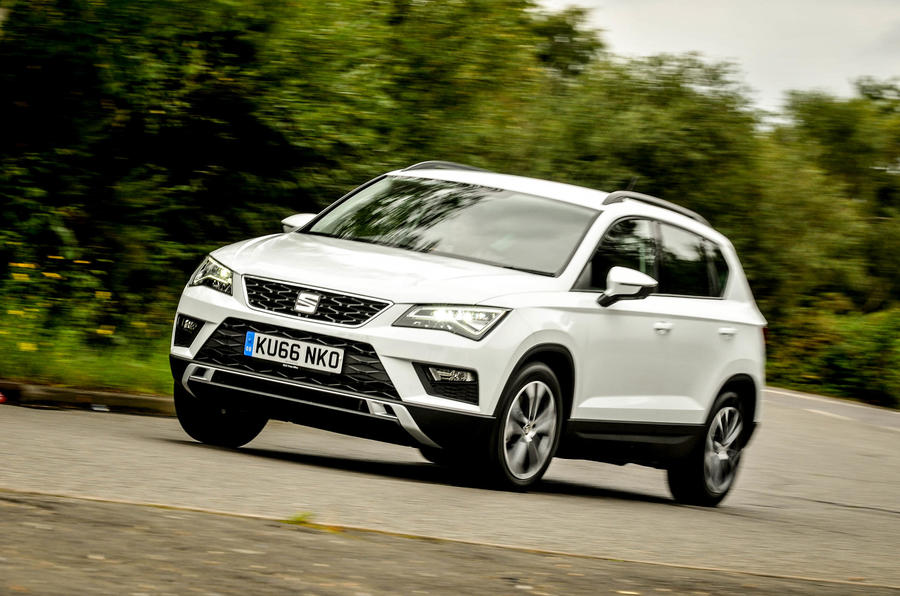What is it?
There’s no doubt about it, downsizing is the future. With increasingly stringent emissions regulations being imposed on manufacturers, small capacity forced induction motors can now be found in everything from compact city cars to mid-engined performance machines. So it comes as no surprise that Seat has gone down this path with its new entry-level Ateca. Or does it?
You see, on paper, putting a 1.0-litre engine in an SUV is rather a risky move. Why, you might ask? Well, it’s all about perception. Sure, a small turbocharged three-cylinder makes sense in a hatchback like a Skoda Octavia or Peugeot 308, but a heavy SUV? Surely it wouldn’t be powerful enough?
That was a question VW had to ask itself when considering the same unit for the Tiguan, and in the end, the more ‘premium’ manufacturer decided against it. However, on reflection, we think that might have been a mistake, because once you’ve managed to get your head around the 1.0 TSI’s tiny dimensions, the little motor makes quite a lot of sense.
With a peak output of 113bhp at 5000rpm the 1.0-litre engine manages to match the output of the more expensive 1.6 TDI. And with the Ateca managing the 0-62mph sprint in 11.0sec, it’s quicker, too.
What's it like?
Importantly, it doesn’t feel underpowered. Like most turbocharged small-capacity petrol engines, there’s a slight step in its power delivery, but it doesn’t feel too boosty. At low revs, as you wait for the turbo limber up, the engine feels somewhat sluggish, but once the motor gets going – at around 2000rpm - power delivery is smooth and progressive.
Around town the engine is barely audible, making for relaxed day-to-day driving. Push it harder and it will emit a distinctive three-cylinder thrum, but it never causes any unwanted vibration. Compared with the 148bhp 2.0-litre diesel we tested earlier in the year, the petrol motor feels in a different league when it comes to overall refinement.
Unfortunately, the same can’t be said for the Ateca’s ride. Thanks to its relatively firm suspension, body roll is well contained, turn-in is crisp and the direct - albeit lifeless - steering allows you to place the car where you want. But this comes at the expense of low-speed refinement; large obstructions are dealt with well, but higher-frequency abrasions translate into a busy secondary ride.
It’s worth noting that four-wheel drive models with their more sophisticated rear suspension ride slightly better than their two-wheel drive siblings. However, what you gain in comfort you lose in practicality; front-wheel drive Atecas like our test car get a whopping 510 litres of boot space, whereas cars fitted with all-wheel drive have to make do with a lesser 485 litres. That said, both models are still more capacious than the Nissan Qashqai and Kia Sportage.
Up front, the cabin’s design will be familiar to anyone who’s experienced the current Leon; that’s to say it’s functional rather than adventurous. It doesn’t feel wildly luxurious, but it’s hard to fault the practical layout and its impressive ergonomics. The optional infotainment system, which includes an 8.0in touchscreen with sat-nav and a DAB radio, is also fast, responsive and easy to use.
Should I buy one?
If you’re looking for a practical, economical SUV that will be cheap to buy and run, then you can’t go too far wrong with the 1.0-litre Seat Ateca SE Ecomotive. Even with its smallest, cheapest engine on board, the Ateca remains one of the best small SUVs you can buy.
Sure, we predict that the diesel models will be more popular, but if you’re buying privately and do most of your driving in town, this entry-level Ateca makes a whole lot of sense.





































Join the debate
Add your comment
This mismatched engine is
Ateca vs Tiguan
Most people don't want to make statements.
winniethewoo wrote:
I get that, but I think a little more flair from SEAT would not go amiss in this car. They are supposed to be the brand with flair in the VAG group